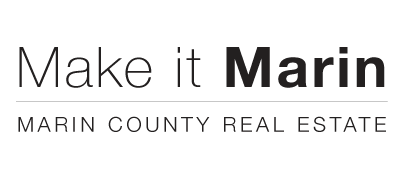
How to buy a home
How to buy a home in Marin CountyI understand that navigating the home buying process can seem challenging. I will guide and advise you during every step of the buying process to help you find the perfect home that fits your needs, budget, and lifestyle.
HOW TO BUY A HOME
Step 1
Find an agent
Find a trusted licensed agent, one you can rely on, who will pull out all the stops, negotiate strongly in your favor and who knows the market well.
Step 2
Get pre-approved
Before beginning your search, your first step is to get pre-approved or ideally fully underwritten for a mortgage loan (unless you will be paying in cash for the full price of your home). Know your numbers, lenders look at your debt-to-income ratio to determine how much you can afford to borrow. Know your credit score, your credit score will affect the interest rate you are offered on your loan. Before you buy check your score. Just by paying down credit cards and other debts your score can increase. Consult your financial advisor.
Step 3
Visit properties
Start your search. Spend time getting to know towns, neighborhoods and school districts. Even if you don’t have children a good school district can increase your resale value. Have your agent show you the homes and surrounding areas of interest. Discuss any concerns you may have with your agent to help you in your decision making process.
Step 4
Negotiate the offer and contract
Read through thoroughly all disclosures and other documents with your agent. Your agent’s job is vital to protecting your interests and understanding the disclosure package. Once you find your home, your agent will write up the offer. An offer usually consists of certain terms, contingencies and conditions which you will determine with your agent. Make sure your agent goes over the purchase contract with you and answers any questions you may have. Based on the seller response your agent will negotiate in your favor through counter offers, or the original offer may be accepted.
Step 5
Navigating the financing process
Once your offer is accepted the financing process continues.
- You submit the completed application and any required supporting documentation to the lender
- The lender orders an appraisal of the property, a credit report and begins verifying your employment and assets
- The lender provides a good faith estimate of closing and related costs
- The lender evaluates the loan package with all of your supporting documents, issues a letter of commitment, loan approval and list of conditions, if any
Step 6
Property inspections
Real estate contracts often contain contingency clauses that allow buyers to inspect the property. Certain inspections are required by lenders and others are a matter of observation and what is particular to a region or area. Typical Inspections are:
- Home inspection
- Pest inspection
- Roof
- Drainage (in some cases)
Step 7
Title
A title spells out who has the right of ownership for a property. It is considered “clear” if there are no claims or liens against it. In order to make sure nothing will prevent transfer of the property to you, a title company will conduct a title search and prepare a preliminary report that indicates what recorded matters affect the title to the property and if the title insurance company is willing to insure the title. At the close of escrow, the title company will issue an Owner’s Policy of Title Insurance to protect you against losses that might arise from covered claims on the title.
Step 8
Preparing for closing costs
A home purchase can be a complex transaction involving many parties and associated fees. In addition to your deposit and down payment, there are a variety of other costs involved in the close of escrow, including:
- Loan origination fees, appraisals and reports
- Surveys and inspections
- Mortgage insurance
- Hazard insurance
- Taxes
- Assessments
- Title Insurance, notary and escrow fees
- Recording fees and stamps
Step 9
Closing escrow
Once your loan is approved and closing costs are established, you will need to:
- Submit a cashier’s check for your down payment and closing costs
- Provide copies of two forms of government identification
- Obtain home owner’s insurance and provide proof at closing
- Review your final loan documents to make sure your interest rate, loan terms, names, and addresses are correct
- Sign your loan documents
- Agent will deliver you the keys to your new home
1. FINANCING YOUR PURCHASE
Why get preapproved?
The home loan process
Things not to do when applying for a home loan
The underwriter reviews your loan
Components of a mortgage
How do lenders qualified buyers?
2. BUYING PROCESS
Your property search
The flow of a real estate transaction
Types of ownership and investing
Disclosures
Making the offer
Escrow

